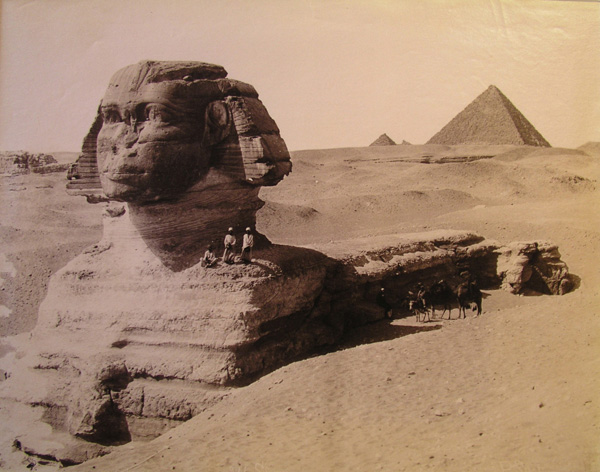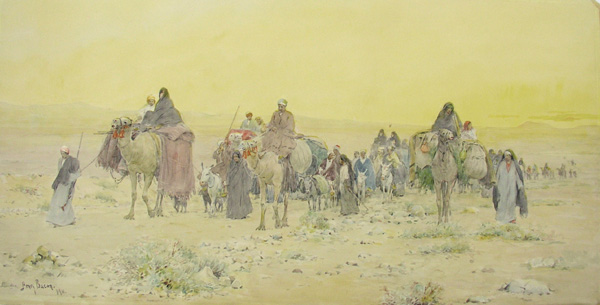 |
| J. Pascal Sébah, The Great Sphinx, about 1880, albumen print from wet collodion negative, transferred from Museum Library |
Through November 27, 2005
When Napoleon took his armies into Egypt in 1798, the news of his exploits drew obvious parallels between the French Empire and that of the ancient Pharaohs. The campaign sparked a lasting fascination in France with ancient and modern Egypt. These Romantic reveries deepened in 1802, when Baron Vivant Denon published an account of Napoleon's campaign, Voyage dans la Basse et la Haute Egypte, and with the appearance of Victor Hugo's prose poem Les Orientales. This interest spread across Europe and to the United States and lasted through the 19th century.
The world of ancient Egypt opened in 1822, when Jean-François Champollion deciphered the Rosetta Stone, translating ancient hieroglyphic writing. As 19th-century scholars began to read the writings of the ancient Egyptians, artists painted images of the desert and the Nile. Meanwhile, ancient Egyptian and Islamic art influenced 19th-century design. With the birth of photography, Egypt and the Holy Land became the topographical photographers' first destination. In all the arts, the fascination with Egypt grew from a preoccupation into a mania.
This exhibition, drawn from the Worcester Art Museum's collection, reflects the evolution and spread of the Egyptian fad. Prints represent Napoleon's campaign, and photographs by pioneers such as Maxime du Camp and Francis Frith depict the Egyptian landscape. Through the 19th-century, Egyptology evolved as a serious scholarly pursuit, as archaeologists and historians unraveled the ancient mysteries. The exhibition includes a group of watercolors by Howard Carter, the English artist and archaeologist who discovered the Tomb of Tutankhuman, a pharaoh's burial undisturbed since ancient times. By the turn of the 20th century, wealthy Americans routinely visited Egypt as part of their Grand Tour. American artists went there, too, and the exhibition also features watercolors and pastels by Henry Bacon. This painter was more attracted to the desert, its light and shifting sands, and to the Bedouin tribesmen than he was to the ancient ruins, and his images reflect the natural beauty and timeless quality of Egypt.
Generous support provided by the Worcester Telegram & Gazette.

Related Event
An Evening of Egyptian Myths and Magic
Saturday, October 8, 7:30 pm
In this engaging performance, see Katie Green unearth Egyptian creation myths from Memphis and Heliopolis. The stories of Sekmet, Isis and Osiris, and some of the struggles between Horus and Seth come to life, accompanied by musician Tony Vacca. The last adult performance by Katie Green at WAM was sold out, so don't delay! Reservations for this performance may be made by calling x3007 or by dropping into the Education Department. Seating is limited. Members $15 Non-members $20.
*This is an evening of spoken word and music for adults and mature teens.
| Select Images from the Exhibition | |
 |
|
| Henry Bacon, Bedouins on Pilgrimage to "Abou Shreer," 1911, watercolor, gift of Mrs. Frederick L. Eldridge in memory of Henry Bacon, 1943.17 | |
 |
 |
| Antonio Beato, Pylon of Ptolemy, Karnak, about 1870, albumen print, museum purchase with funds given by Karl and Dorothy Briel, 2005.9 | Howard Carter, Queen Nefertari, 1908, watercolor, Mrs. Kingsmill Marrs Collection, 1925.144 |

 Sign up for WAM eNews
Sign up for WAM eNews